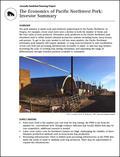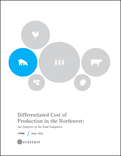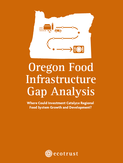Hoop-House Pork |
Research Chapters
|
|
Overview
The pork industry is small-scale and relatively undeveloped in the Pacific Northwest. In Oregon, for example, recent years have seen a decline in both the number of farms and the total value of pork produced. Alternative pork producers in the Pacific Northwest (and elsewhere) tend to utilize hybrid artisanal production systems including barns, hoop houses, and pasture. To get to the scale needed to sell into mass markets, the Pacific Northwest alternative pork industry will require medium- to long-term investment in and coordination of low-cost feed and processing infrastructure accessible to small- to mid-size hog farmers; increasing the scale of existing hog-raising enterprises; and expanding the range of differentiated, strongly branded products available to consumers. Supply Drivers
Demand Drivers
Opportunities The pork industry in the Pacific Northwest, in order to become a significant supplier of regional markets, needs some “industry building.” In particular, the industry is in need of an affordable, regionally produced feed manufactured from locally grown grains such as wheat, barley, oats, and legumes, or waste from dairies and breweries. To meet demand, many of the smallest-sized hog producers (1–24 head), who comprise 89% of the total number of hog farms in the Pacific Northwest, would have to scale up production. One-off investments are unlikely to be successful over the long-term, without coordinated investment to build a Northwest pork industry.
For more detail on the economics of pork production in the Pacific Northwest download Production Analysis: Pork from the sidebar. |
Downloadable FilesBelow are combined and individual files related to pork production and infrastructure opportunities in WA and OR. To stay informed about next steps from this research please share appropriate information below.
Combined FileIndividual Files |











